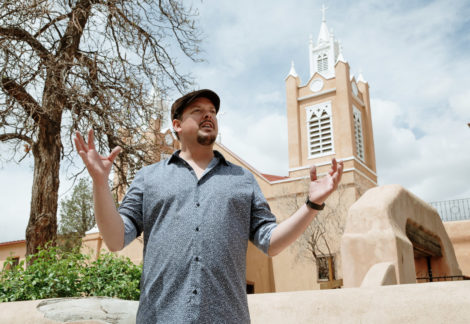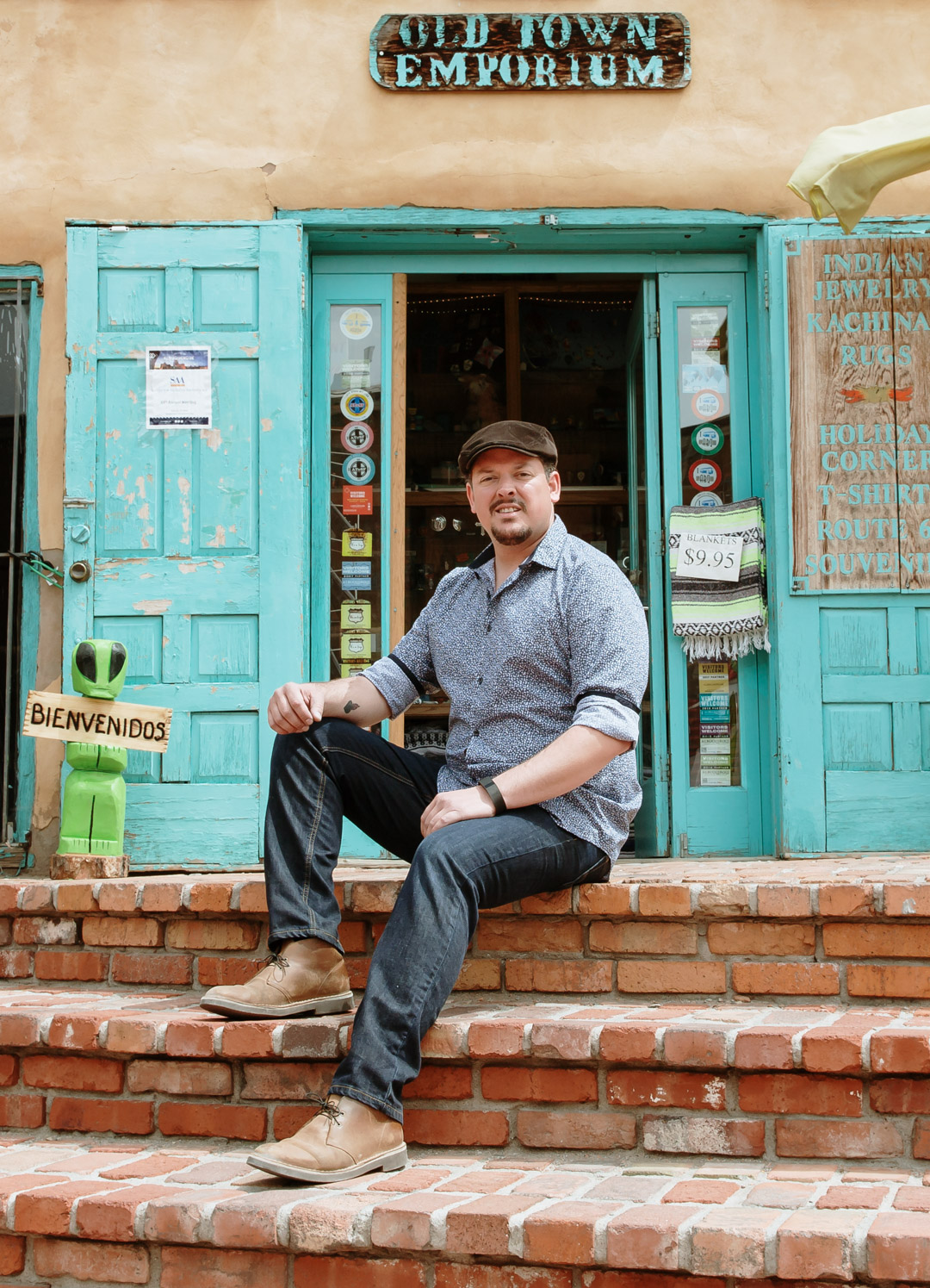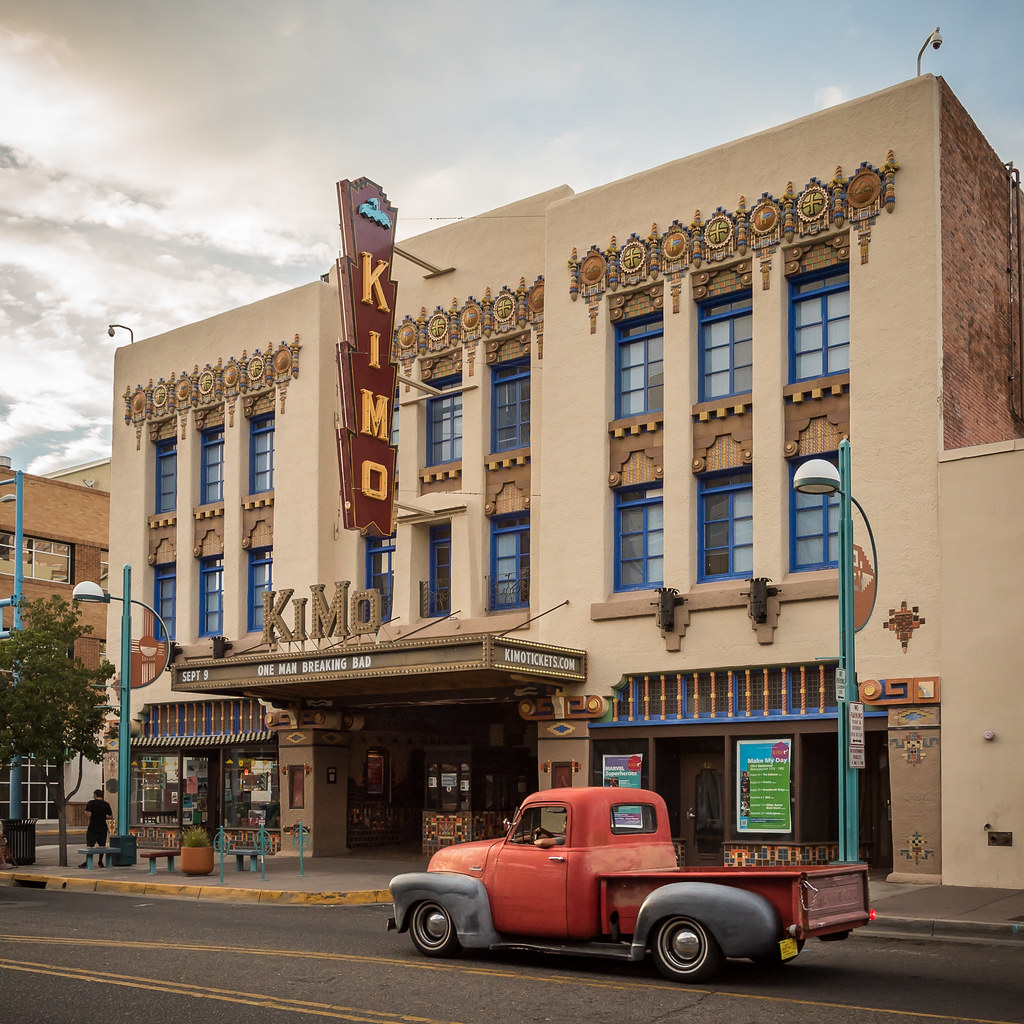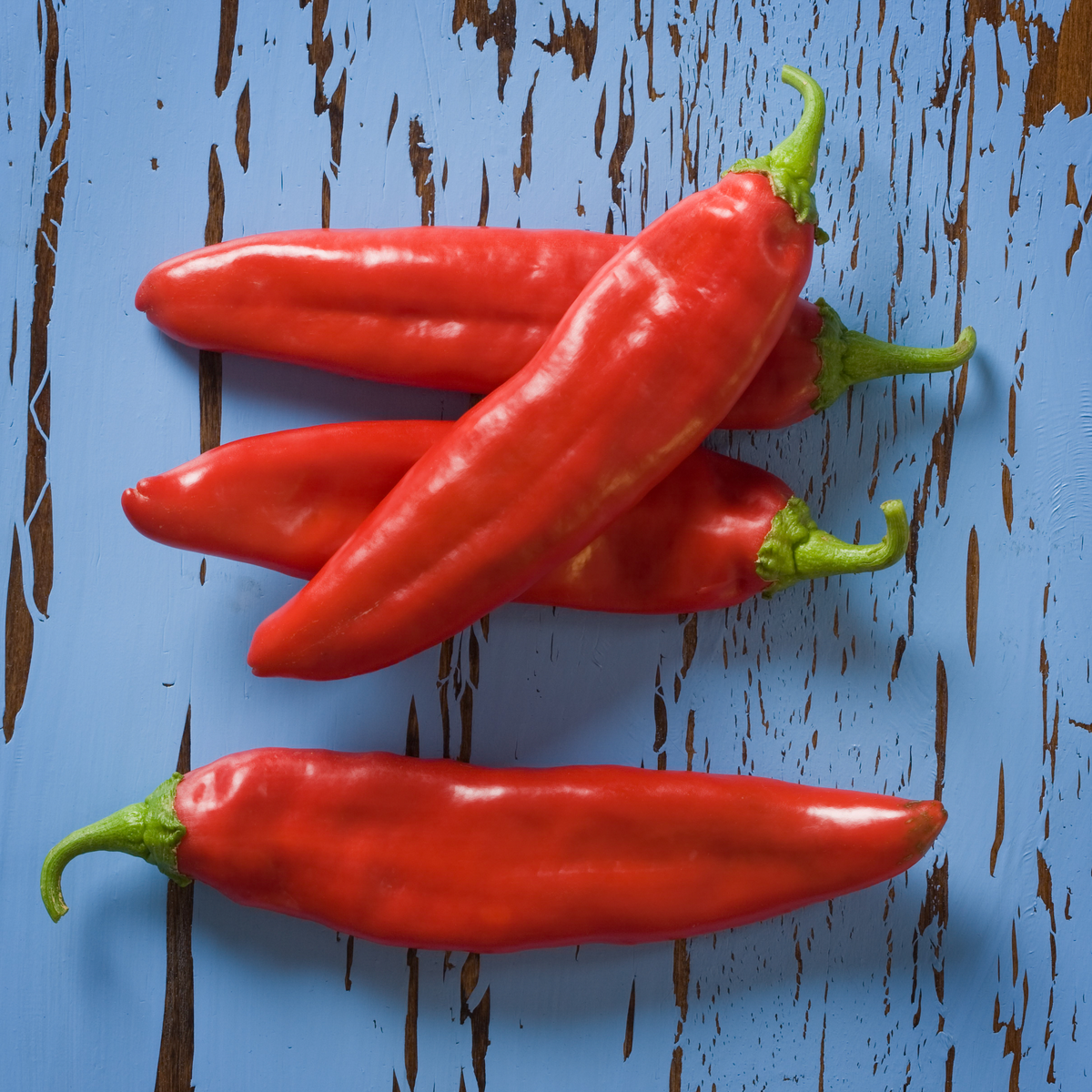Eight Reasons You Should Visit Albuquerque
Eight Reasons You Should Visit Albuquerque
By Heritage Inspirations Guide Bobby Gonzales
I moved to Albuquerque fourteen years ago to go to school and I liked it so much, I never left. New Mexico is a state like no other in the U.S. and is truly special, and while most people use Albuquerque as a transit point for Santa Fe or Taos, I’m going to recommend Albuquerque deserves more of your time and attention.
My name is Roberto Carlos Gonzales and I’m a fifteenth generation New Mexican. I grew up in the Northern part of the state in the village of Pojoaque. There, within 13 miles of my family home, are 6 of the 19 pueblos of New Mexico. I grew up attending the feast days at pueblos like San Ildefonso, Ohkay Owingeh and Nambe. My grandfather was a Matachines Dancer. The Danza de Matachines is the Dance of the Moors and the Christians. Its history can be traced back to 17th century Spain and was introduced to the Puebloan People soon thereafter. Even as a small child I was fascinated by the movements of the dance kicking up dust from the desert floor. I loved the sound of the raddles shaking and all of the colorful headdresses and satin ribbons vibrating in the air. I’m a native New Mexican, and here are a few of the reasons I believe you should come experience Albuquerque for yourself.
Albuquerque’s Diverse Cultural Heritage
Albuquerque is one of the most culturally diverse cities in the nation and it is the epicenter of Southwestern influences and traditions. As the primary metropolitan zone of New Mexico, not only do we have American Indian, Hispanic, Latino and Anglo cultures like most New Mexican towns, but we are truly multicultural with African American, Asian, Middle Eastern and other internationally diverse ethnic communities, creating a unique blend of cultures and heritage that makes it a special travel destination.
For centuries, the Native Americans and the Spanish had conflicts, battles and revolts and only in the last century have we learned to work together, live together, overcome our past differences, and celebrate together. It is our uniqueness and differences that we now celebrate. This Mezcla de Culturas (Mixture of Cultures) and the influences we have had from other civilizations, like Indigenous Mexico, Asia and beyond – has united us, influenced us and brought us close. Many native Albuquerqueans consider themselves not only Native American or Immigrant American but blended American, or proudly and simply New Mexican. This is how I identify.
Albuquerque’s Easy Access to Phenomenal Outdoors
 If you travel in any direction from Albuquerque, the scenery and landscape will change drastically and provides an amazingly easy launching pad to phenomenal outdoor locations. Anywhere from mountains peaking at 13,100 feet, to Ponderosa pine covered forests, to pinon scrubbed foothills, to limestone hoodoo playgrounds, to Rio Grande’s Paseo del Bosque river trail system, to petroglyphed cliffsides – there is an outdoor adventure for everyone.
If you travel in any direction from Albuquerque, the scenery and landscape will change drastically and provides an amazingly easy launching pad to phenomenal outdoor locations. Anywhere from mountains peaking at 13,100 feet, to Ponderosa pine covered forests, to pinon scrubbed foothills, to limestone hoodoo playgrounds, to Rio Grande’s Paseo del Bosque river trail system, to petroglyphed cliffsides – there is an outdoor adventure for everyone.
We have sacred deep-red clay soil that is rich in iron coating the high desert bluffs and landscapes and those pinon bushes are actually pygmy forests. These appear as bushes to the untrained eye, but because of the high elevation, lack of rainfall and unusual mineral content in the soil these pinon (pine) trees are stunted in their growth. These forests are found throughout the state and are visible when traveling to Chaco Canyon, White Sands, Santa Fe and El Malpais.
Our state is very volcanic, with dormant volcanoes that are easily seen on the western horizon looking out from Albuquerque. Traveling to Chaco Canyon we journey over an ancient lava field that once flowed for miles out of a super volcano that erupted 400,000 years ago. This lava field vented dozens of miles away in a shadowy landscape of molten rock that looks like steeples and thumbs rising out of the desert floor.
Albuquerque’s Sandia Mountains are named after the Spanish word for watermelon because of the reflecting shades of pink and green they turn at sunset. And don’t miss the opportunity to study these “watermelon” mountains up close with Sandia Peak’s Aerial Tramway, a 2.7-mile ascent to the 10,378 peak for magnificent panoramic views of the city. This aerial tram was built in 1966 and as you fly upwards, you’ll soar over stone spires, cliffs, pinnacles and various trees – like aspens, pines, shrub oak, firs and spruce. Once at the top, you’ll be able to see 11,000 square miles of the Land of Enchantment.
Albuquerque’s Wonderful Mix of Foods
Everything in New Mexico has a story around it. Everything has an anecdote or riddle or lore surrounding it. The riddle or funny side note when it comes to food is that New Mexico has a state question: Red or Green (chile)? Or Christmas, which signifies half red and half green chile, meaning visitors and locals have enjoyed Christmas in New Mexico year around – Ha!
The ancient people who lived here grew what is known as the three sisters: beans, corn and squash. Communities in the past and the present have thrived on the three sisters crops. So, while Albuquerque is known for these staples, often covered with your choice of chile, the great part of this urban center is that wide mix of peoples from all over the world, which delivers a fine selection of international foods too. Since Albuquerque remains small and undiscovered, those ethnic populations cook authentically, for themselves. They haven’t sold out to fusion cuisine or to fancy tourist-oriented restaurants, so, you know it’s good!
A fun extra – I’ve included my family’s red chile recipe at the bottom, so keep reading.
Albuqerque’s Proximity to American Indian History
 Albuquerque has long been the crossroads of Hispanic America and is surrounded by Native American Spiritualism. The City of Albuquerque and the very state itself has 4 prominent sections (quadrants) The Rio Grande River, the 4th longest river system in the country, flows the entire length of the state from North to South, almost perfectly center, with Interstate 40 stretching East and West and intersecting the Rio Grande River in the City of Albuquerque. Both the river and the state’s dominant highways (25 & 40) will guide explorers to various Pueblos, ancient farmlands, historic villages and metropolitan areas.
Albuquerque has long been the crossroads of Hispanic America and is surrounded by Native American Spiritualism. The City of Albuquerque and the very state itself has 4 prominent sections (quadrants) The Rio Grande River, the 4th longest river system in the country, flows the entire length of the state from North to South, almost perfectly center, with Interstate 40 stretching East and West and intersecting the Rio Grande River in the City of Albuquerque. Both the river and the state’s dominant highways (25 & 40) will guide explorers to various Pueblos, ancient farmlands, historic villages and metropolitan areas.
With 23 Indian tribes and pueblos located in New Mexico, Albuquerque is centrally located with the majority of the 19 pueblos located nearby. Luckily, several pueblos hold regular tours and Heritage Inspirations has developed a good relationship with Acoma Pueblo, offering day tours to Sky City from Albuquerque, as well as special event days called feast days. During these feast days you can observe ancient traditional dances like the Antelope Dance, the Turquoise Dance and the Danza de Matachines. I love taking our guests to cultural destinations like Acoma, to experience living history and culture with centuries of tradition.
Albuquerque’s Architecture
The Ancient Puebloan People lived in rocky areas and constructed their communities with chiseled sandstone quarried in canyons and mountainous areas. After a 47-year long drought in this desert, communities were forced to move higher into the mountains and closer to the rivers. Near the rivers the sandstone wasn’t available and they learned to make new communities with mud from the embankments of the river. They would carve out mud from the embankments and walk it back into their village and add other strengthening material like dried grasses and foliage. This mixture would be compacted into misshapen blocks, called Terrones later by the Spanish, which were stacked on top of each other like bricks enclosing the structure. Wooden timbers and dried willow branches and bark were then placed across to enclose the ceiling of the structures. After the Spanish made first contact at Kuaua Pueblo, the Historic Coronado Site just north of Albuquerque, they were taught by the Tiwa Indians to build structures in this way. The Spanish explorers were not pleased with the misshapen blocks, and thus built wooden molds for the earthen Terrones, and what we know as adobe was invented.
Since its founding in 1706, Albuquerque has been influenced by many cultures and architectural methods, not just the earthen adobe style. The first buildings were all Puebloan, but later came what is known as New Mexican Farmhouse architecture, with the same overall Puebloan design but now featuring wooden and later tin pitched roofs. In 1880, the Atchison, Topeka and Santa Fe railways were established in Albuquerque. The railways brought many people to our city, including European immigrants in search of a new home. The Europeans brought Victorian architecture to Albuquerque. In addition to Victorian styles, the Europeans modified Puebloan styles by adding Gothic and Greek trimmings to doorways and windows. Brick coping was added to the exterior edge of roofs and this became known as Territorial Revival architecture.
In 1926, Route 66 was established and brought people via the motor vehicle through Albuquerque, from Chicago and San Diego. With them came Art Deco, which can be seen throughout the city. Art Deco and Puebloan styles combined and a whole new architectural style was born: Pueblo Deco. The Kimo Theater in downtown Albuquerque is one of the best examples of Pueblo Deco and is a must see when visiting.
Albuquerque’s Excellent Year-Round Climate
 New Mexico has a dry/semi-arid, mostly high-altitude climate, with abundant sunshine. While you’ll find four seasons in the Northern half of the state, the winters are readily accessible for outdoor activities and with the dry air, a cold day can still feel warm and welcoming with the sun warmth enfolding you. The Southern half of the state typifies how most people think about New Mexico, with a hot dry climate year-round. Either way, you’re bound to find a mix of weather and climates all within a few hours of Albuquerque, providing hospitable weather opportunities for everyone, no matter the time of year.
New Mexico has a dry/semi-arid, mostly high-altitude climate, with abundant sunshine. While you’ll find four seasons in the Northern half of the state, the winters are readily accessible for outdoor activities and with the dry air, a cold day can still feel warm and welcoming with the sun warmth enfolding you. The Southern half of the state typifies how most people think about New Mexico, with a hot dry climate year-round. Either way, you’re bound to find a mix of weather and climates all within a few hours of Albuquerque, providing hospitable weather opportunities for everyone, no matter the time of year.
Take note that one of the beauties of winter in Albuquerque, is that you can spend your morning skiing the mountains at Sandia Ski and then spend the afternoon playing a round of golf at one of our amazing golf courses.
Albuquerque’s Friendly Embrace of Different Peoples
My parents taught me to embrace the variety of cultures that live side by side and to have an understanding, and most importantly an appreciation, for their traditions as well as our own. In New Mexico, many cultures blend and mix together so beautifully and when it comes down to it, I believe that we’re simply all New Mexican.
As a visitor, you’ll feel Albuquerque’s warm embrace and people will approach you openly with friendly interest. For example, it is not uncommon to be approached by a local in the Old Town Plaza who wants to share a little piece of their history with you. I believe that we’re all story tellers here, and story telling has a rich tradition.
Albuquerque’s Inspirational Places
 Frederico Vigils Mundos de Mestizaje: A Vision of History through Fresco. This Fresco is located at the National Hispanic Cultural Center and brings to life 3,000 years of Hispanic heritage. The fresco is within a towering rotunda and is so strikingly beautiful and inspiriting. It’s Albuquerque’s Sistine Chapel.
Frederico Vigils Mundos de Mestizaje: A Vision of History through Fresco. This Fresco is located at the National Hispanic Cultural Center and brings to life 3,000 years of Hispanic heritage. The fresco is within a towering rotunda and is so strikingly beautiful and inspiriting. It’s Albuquerque’s Sistine Chapel.
The Indian Pueblo Culture Center is a wonderful museum that is owned and operated by all of the 19 pueblos in New Mexico. This cultural gem will take you on a journey through New Mexico’s Puebloan world. On the weekends, various tribes perform traditional dances at the cultural center.
Who doesn’t love a margarita?! I especially love margaritas at Garduno’s at Hotel Albuquerque. Their coconut margarita with honey and toasted coconut rim is so decadent and delicious, you absolutely must enjoy this in their Spanish gardens. I also love a traditional margarita at the High Noon Saloon in Old Town. The Saloon was built in 1785 and has previously been a gambling parlor, brothel, and apartments. Now, the Saloon is a wonderful locally owned restaurant that showcases Spanish, Victorian and Puebloan designs, in its three dining rooms.
 As a guide for Heritage Inspirations, I have enjoyed getting to look deeper into my culture(s) and learn more about my history. It has been a rewarding experience to be able to share that with guests from all across the globe. Guiding people from Europe and as far east as Thailand, it’s been wonderful to see their faces light up because of their experience out on tour with me. I’m humbled and blessed by how many wonderful new friends I’ve made both in the communities we visit and those who are visiting with us.
As a guide for Heritage Inspirations, I have enjoyed getting to look deeper into my culture(s) and learn more about my history. It has been a rewarding experience to be able to share that with guests from all across the globe. Guiding people from Europe and as far east as Thailand, it’s been wonderful to see their faces light up because of their experience out on tour with me. I’m humbled and blessed by how many wonderful new friends I’ve made both in the communities we visit and those who are visiting with us.
Albuquerque is magical because of its traditions in architecture, artwork, food and the passing down of stories from generation to generation, that are all reflective of our natural surroundings. Even though New Mexico is home, there is still much to discover and explore, even for me. I love to invite guests to come explore with me and immerse themselves in the place I call home. And, I especially love it when visitors realize what a hidden gem of a city Albuquerque is. Let me show you and come find out for yourself!
Bobby has specially formulated the Mezcla de Culturas, El Bosque Chiquito and Acoma Pueblo tours for Heritage Inspirations and leads Chaco Canyon day trips.
As promised – Bobby’s Homemade Red Chile Recipe
20 red chile pods with stems and seeds removed
2 Tablespoons of pork lard or bacon drippings
1/3 cup flour
1 1/3 cups hot water
1 1/3 cups chicken, beef or vegetable stock
A dash of salt
1 Tablespoon crushed and finely chopped garlic
Cracked black or white pepper to taste
A dash of Mexican oregano (1/32rds of an ounce, haha!)
2 Tablespoons of extra virgin olive oil
6 ounces cubed meat (pork or beef), optional
Directions:
- Fry meat in a Tablespoon of olive oil and once cooked to preferred temperature, set aside and rest
- Add water and broth to sauce pan and bring to boil
- Add your chile pods
- Pour ¾ of the liquid into a blender, once chile pods are softened and rehydrated
- Add your pork lard, chopped garlic, salt, pepper, oregano and flour to the chile pods to the pan and sauté on low, stirring continuously until pods are coated and flour is browned
- Transfer all your beautiful ingredients, except the fried meat, to the blender and blend on high for 3 to 5 minutes
- Strain your sauce into the pan you cooked your meat in, plus the meat, and simmer your red chile for 20 minutes
- Monitor your sauce and add a little flour stirred in hot water to thicken, or just hot water to thin
- Enjoy the red chile when it smells pefectamente hecho maravillosamente!
Note: Chile is wonderful on mashed potatoes, roasted potatoes, grilled meats, over eggs and of course with many New Mexican dishes.






I loved this description! My family moved here from California (I am 4th generation), but we literally were enchanted with New Mexico and life in ABQ! We are still adventuring here in this magical place. Thank you for describing some of the many things we love. And thank you for talking about the fresco at the National Hispanic Culture Center it is a fascinating look at historical interactions through time and space of Arabs, Europeans, Indigenous American peoples, and us! Did you know FREDERICO VIGIL IS PAINTING ANOTHER FRESCO AT THE ABQ CONVENTION CENTER ON THE HISTORY OF WINE IN NEW MEXICO? You can go there and watch the multiyear progress. Thanks.
We love highlighting those gems that are not easy to find for guests visiting our magical state. We will definitely have to check out Fredericos newest works on this fresco about the history of wine in our state! Wow, can’t wait to see it! Thank you for taking the time to comment and read our blog. It’s locals like yourself that help spread the word about our travel experiences and passion to share our heritage throughout the Land of Enchantment!
Another great reason to visit ABQ is how easy it is to visit the rest of New Mexico! We have a great airport (Santa Fe can’t be flown to commercially), and from here most other NM destinations are just a few hours away. I always tell family to visit NM and use Albuquerque as their home base!